A nationwide effort to save the whitebark pine in underway. Much of the story is happening in the Pacific Northwest
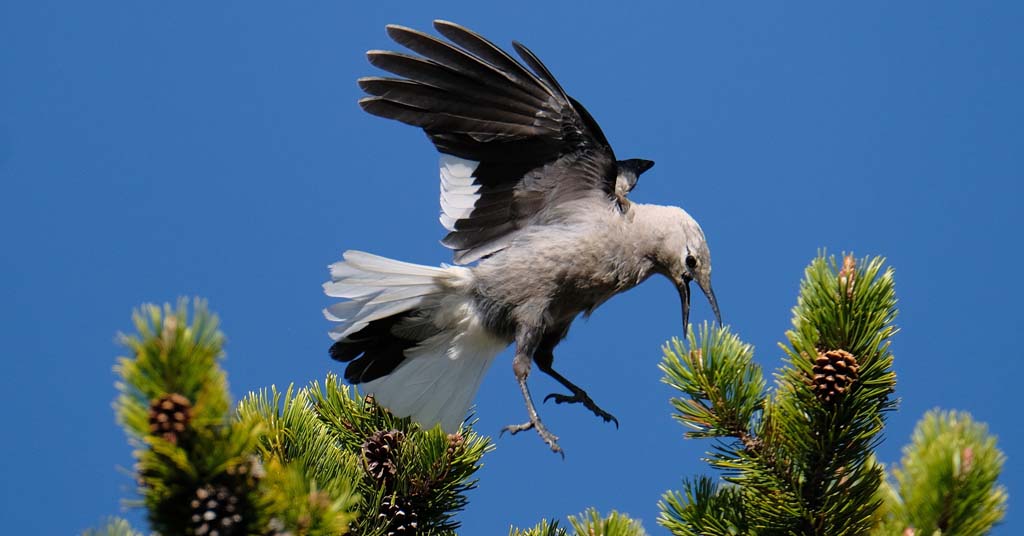
Super spreader: Whitebark pines depend on Clark’s nutcrackers to distribute their seeds. Photo: Jackson Chase
By K.C. Mehaffey. April 11, 2024. At the Dorena Genetic Resource Center near Cottage Grove, Ore., scientists are collecting whitebark pine cones, growing seedlings, examining them for resilience to disease and then gathering cones from the strongest survivors.
Those select seeds are then used to grow hundreds of thousands of baby trees in nurseries and plant them across the West.
It’s a job meant for the Clark’s nutcracker, a gray-and-black bird in the crow and raven family with a long sharp beak designed to crack open the toughest of nuts.
Mostly, he uses that beak to dig into the tough cone of a whitebark pine, pick out the seeds, eat a few and stash away several more in the ground to eat later.
Over the course of a year, a Clark’s nutcracker will cache thousands of seeds, many of which will go uneaten and become the next generation of whitebark pines.
While it appears to be their favorite food source, Clark’s nutcrackers aren’t wholly dependent on these high-elevation trees. In the Cascade Range, they also eat Douglas fir and ponderosa pine seeds.
But whitebark pine trees do depend on the nutcracker to disperse their seeds throughout their range that stretches across 80 million acres in seven western states and two Canadian provinces.
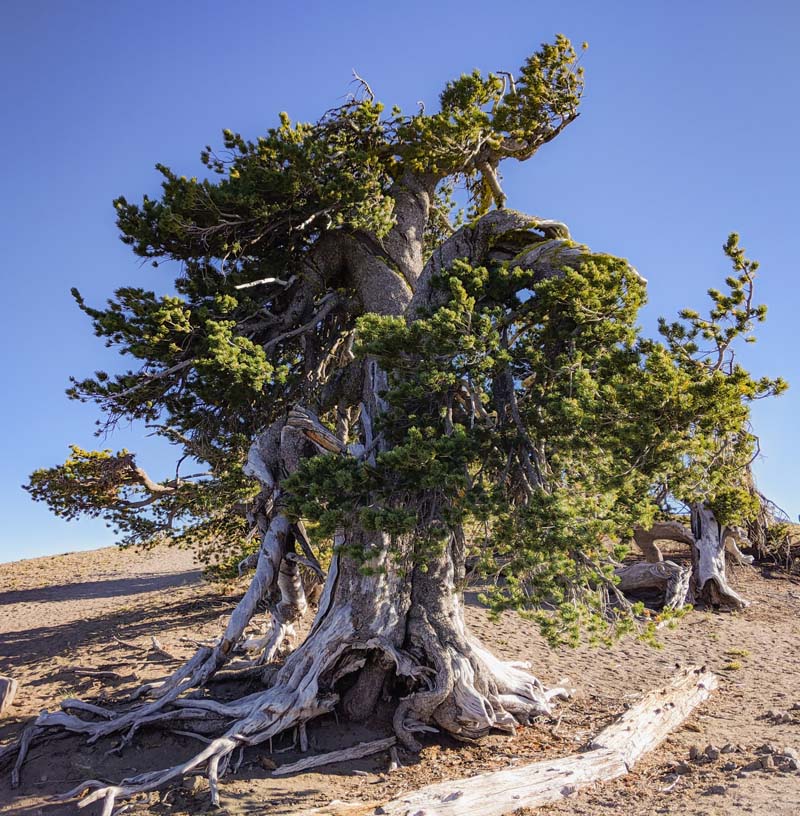
In good standing: Whitebark pine Grandmother Tree in Oregon’s Crater Lake National Park. Photo: Quinn Lowrey/QLCeramics
Now, one of the West’s few tree species able to survive on cold, windy ridgetops and steep slopes at alpine and subalpine elevations is in serious trouble.
It’s not that Clark’s nutcrackers aren’t doing their job—they are.
But a nonnative fungus that causes white pine blister rust has entered the scene and become an existential threat to the pines, says Diana Tomback, one of the foremost researchers of the unique relationship between whitebark pines and Clark’s nutcracker.
Tomback is professor and interim chair of the Department of Integrative Biology at the University of Colorado Denver. She also helped found the Whitebark Pine Ecosystem Foundation with several colleagues and now serves as its outreach coordinator.
She says there’s no cure for the disease, which continues to spread and threaten whitebark and other five-needled pines in the West. Many of these forests have also lost trees to mountain pine beetle infestations and wildfires that are becoming more frequent and more severe with the climate crisis.
“We’ve got this disturbing downward spiral,” Tomback tells Columbia Insight.
When a lot of whitebark pine die off, Clark’s nutcrackers—which are extremely mobile—sometimes move to new locations and find alternative seed resources.
And when the nutcrackers leave, the remaining whitebark pine trees—those that are resilient to blister rust—lose their means of dispersing seed.
“Whitebark pine clearly needs human intervention to come in and break this downward spiral,” says Tomback.
No ordinary tree
According to the Federal Register listing, “Whitebark pine is considered both a keystone and a foundation species in western North America, where it increases biodiversity and contributes to critical ecosystem functions.”
Its large and high-calorie nut is a critical food source for Clark’s nutcracker, and for 18 other animal species ranging from grizzly bears to red squirrels.
Individual trees can live to be hundreds of years old and become craggy and gnarled as they appear to thrive in the harsh mountain environment.
In many western landscapes, its beauty is secondary to the immense importance of these forests for sequestering snowpack.
“Whitebark pine forests exist in the headwaters regions for several large western river systems (e.g., Snake, Columbia and Missouri). High elevation forests like those featuring whitebark pine help redistribute, shade and retain snowpack, and their root systems stabilize soil and prevent erosion, especially on steep, rocky slopes where they thrive,” says Wash. D.C.-based American Forests.
The nonprofit group deems them “vital to the health of western watersheds, helping sustain ample stream flows that human and natural communities depend on.”
When not exposed to a foreign fungus, these trees are ultra-hardy.
They tolerate poor soils and can exist in rocky and shallow soils over bedrock. They grow in mountain ecosystems with vastly different climates, with annual precipitation amounts ranging from 20 inches to 100 inches of rain—most of which falls as snow.
But they’re also slow growing and can be outcompeted and replaced by more shade tolerant trees, such as subalpine fir.
Tomback says having these rugged trees at high elevations stabilizes the snowpack and allows it to melt at a slower rate, providing water to lower elevations during the summer.
In a short documentary about saving the whitebark pine, she says, “If we fail to do anything for whitebark pine, we are going to end up with many regions of our high mountain areas without it and we lose the ecosystem services, the wildlife food, the habitat protection, the watershed protection. It will be very apparent that some cataclysm affected our western forests mightily on a large scale.”
In January 2023, the whitebark pine was listed as threatened under the Endangered Species Act. It is the most widely distributed forest tree under ESA protection, according to the Whitebark Pine Ecosystem Foundation.
According to U.S. Forest Service researchers Sara Goeking and Deborah Izlar, there are now more standing dead whitebark pine trees than live ones.
They estimate that more than 325 million trees have died.
Because whitebark pine is a high-elevation species, the vast majority of its range is on public land. Tomback says between blister rust and mountain pine beetle, some places—like Glacier National Park—have lost the majority of whitebark pine trees.
There, she says, 80-90% of the living trees now have blister rust. Along with the northern Rocky Mountains, the Pacific Northwest is among the areas that have seen widespread decline from this unprecedented combination of threats.
Just how bad the rust is varies widely across Washington and Oregon, according to Robyn Darbyshire, regional silviculturist for the Forest Service’s Pacific Northwest office in Portland.
She says some places, like the Warner Mountains in southern Oregon, have no rust. Others, like the Gifford Pinchot National Forest seem to have a fairly high degree of resistance.
But trees in some areas seem to have very little resistance to the disease.
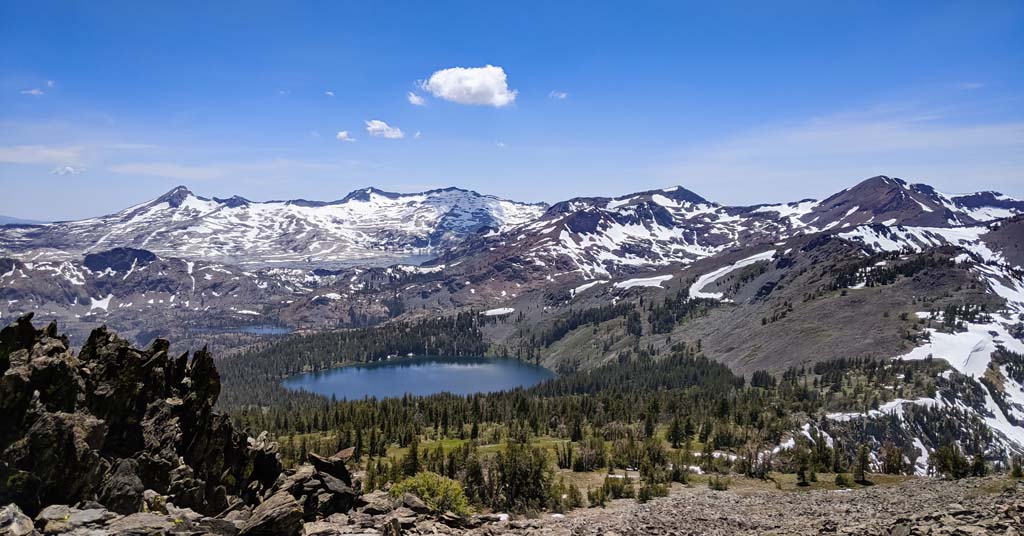
High and dry: Prime whitebark pine habitat in California’s Desolation Wilderness. Photo: Quinn Lowrey/QLCeramics
Still, there’s plenty of whitebark pine around, Darbyshire says. And some of the trees—at least individual ones that appear to be resistant to blister rust—can be protected from mountain pine beetles by using pheromone patches.
“We can protect good trees and high-value stands, and make sure we have a variety of age classes,” she says.
Additionally, having white pine blister rust isn’t always a death certificate. In some cases just a branch tip will die off, and the tree is able to prevent it from getting to its trunk.
“Trees can have rust for quite some time, and just because they have rust doesn’t mean they’re going to die from it. When we get worried about rust is when it girdles the mainstem of the tree,” says Darbyshire.
Those trees that are surrounded by the disease but seem to resist it have become the foundation for recovering this majestic conifer.
“In nature, these things would sort themselves out over time,” says Tomback.
Resistant trees would survive, and their seeds would eventually become the next generation of whitebark pines. But whitebark pine cones don’t open on their own, Darbyshire notes. And if Clark’s nutcrackers leave to find food in new areas, it could become too difficult for the next generation of trees to become established.
Human intervention
Scientists working to save the whitebark pine are playing the long game.
Many likely won’t be around—or will at least be retired—by the time the seedlings they’re cultivating produce cones.
Darbyshire says that a Douglas fir or ponderosa pine can start producing cones as young as 10 years old.
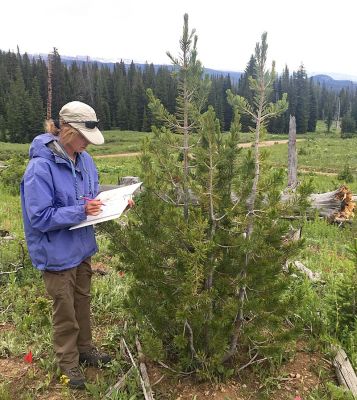
Pine solve: Diana Tomback studies whitebark pine across the West. Photo: E.R. Pansing
It takes whitebark pine trees 30 to 50 years to mature.
To find the resistant trees, people go into whitebark pine stands where rust is occurring, and look for trees that appear to be resisting the disease.
“We do a fairly thorough evaluation of the degree of rust resistance. We’re not necessarily looking for the perfect tree that has no rust at all, but ones that have some sort of defense system that keeps rust from getting to the main stem,” says Darbyshire.
They collect cones from those trees, grow the seeds in a greenhouse, and subject them to rust spores to test whether they are truly resistant.
“You might have to test 100 trees to find five that are resistant enough. It’s a lot of work narrowing it down and finding those resistant trees,” she says. “Then we want to go back and collect seed from those trees that have the rust resistance.”
The cones from each resistant tree have to be carefully marked so the seedlings can be planted back in the same geographic areas.
And they can’t all come from the same rust-resistant tree.
“We want to make sure we have at least 25 parent trees in a seed lot, so there’s genetic diversity,” says Darbyshire.
The seedlings are grown in greenhouses in containers.
And true to this slow-growing tree’s nature, it takes two to three years to get a seedling that’s big enough to plant, whereas most conifers would be ready to plant after a year.
The whole process takes several years, just to find the right seeds, ensure there’s enough genetic diversity and grow seedlings to an age where they can be planted.
Final restoration plan
Tomback says work on the National Whitebark Pine Restoration Plan started in 2016—six years before the tree was listed as threatened.
It’s a collaborative inter-agency and tribal plan based on identifying a subset of the whitebark pine range for priority restoration, developed by the Whitebark Pine Ecosystem Foundation and American Forests and advised by the Forest Service.
“We think it will be highly compatible with the U.S. Fish and Wildlife Service Recovery Plan for whitebark pine, which is now under development,” says Tomback.
The pandemic and a government shutdown delayed the process, but the draft National Whitebark Pine Restoration Plan went out last summer.
“I’m in the middle of incorporating minor suggestions and updates. The revision has just been submitted to the Forest Service,” she says.
Restoration is a challenge—29% of the whitebark pine’s range is in wilderness areas.
The draft plan got high marks from American Forests, which is working with the National Park Service to restore the trees within national parks. Its website says, “The National Whitebark Pine Restoration Plan is a science-driven, collaborative strategy to restore whitebark pine across its U.S. range. The plan is designed to work with nature—by using the seed dispersal capabilities of the Clark’s nutcracker to restore whitebark pine populations.”
The plan suggests that agencies identify 20-30% of the range of whitebark pine within a given jurisdiction—such as a national park, a Forest Service region, a Bureau of Land Management state office or a tribal reservation—to focus initial recovery efforts.
Because of the logistical and financial challenges of recovering a species that is so far ranging and often so remote, these core areas would receive the highest priorities and eventually serve as dispersal centers for adjacent areas.
Tomback says Region 6 of the U.S. Forest Service—which comprises national forest land in Oregon and Washington—has been proactive in selecting core areas and coming up with its restoration strategy.
Identifying those core areas was more challenging than Darbyshire thought it would be.
“We looked at places where there was a need—places that had burned or places with bark beetle mortality, and then we also wanted to identify places where we need to go collect seed for resistance testing, because we haven’t done that everywhere yet,” she says.
Part of the challenge is the ecological diversity across Washington and Oregon—from the Olympics to the North Cascades to the Selkirks. Darbyshire notes that the Forest Service region hasn’t gotten feedback on its core-area selection from the national office.
“These things aren’t set in stone. We’ll see how other regions did the process and learn from each other.”
Even without a finalized plan, the Forest Service is continuing its work to replant stands of new rust-resistant trees.
Mimicking Clark’s nutcrackers
A big part of the restoration challenge has to do with where whitebark pine grow. Tomback says 29% of their range is in wilderness.
Here in the Northwest, 60% of their range is in wilderness, and an additional 20% is in roadless areas, according to Darbyshire.
“So accessibility is pretty challenging in many cases,” she says, adding, “It’s important to protect the cone-bearing trees that we have inside and outside of wilderness and to establish new rust-resistant trees wherever we can.”
Within the wilderness, the Forest Service can’t use invasive technical or mechanical means to plant trees. Even taking cones out, growing them and brining seedlings back to plant is not fully supported, says Tomback.
She and other researchers are trying to figure out if humans can essentially mimic what Clark’s nutcrackers do.
“That means going in with bags of seeds harvested within the same seed zone and methodically planting them in caches, just like the nutcrackers,” she says.
The method is still experimental.
“We need to monitor it and get results to figure out whether this is going to be adequately productive and learn how to modify where we put the seeds” and discourage rodent thefts, she says.
But since it’s one of the few things they can do in wilderness areas, the Forest Service, Park Service and BLM are all seriously looking at the option.
While scientists are doing some of the work that Clark’s nutcrackers do, the long-term plan is to eventually give the job back. But in areas that are highly devastated, if nutcrackers have moved on to find better food sources, that may not happen until enough rust-resistant trees have grown old enough to start producing cones.
“It’s sort of a you-build-it-and-they-will-come idea,” says Tomback. “If we can restore these areas where whitebark pine were once abundant, we believe the nutcrackers will come back.”


 Columbia Insight’s reporting on biodiversity in Oregon is supported by the Autzen Foundation.
Columbia Insight’s reporting on biodiversity in Oregon is supported by the Autzen Foundation. 
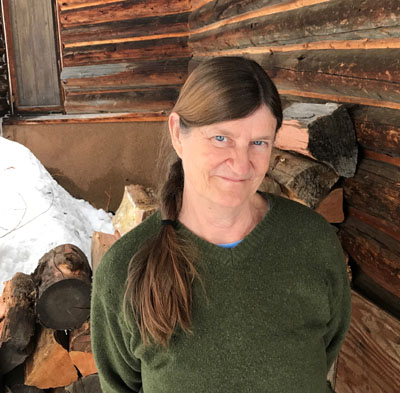
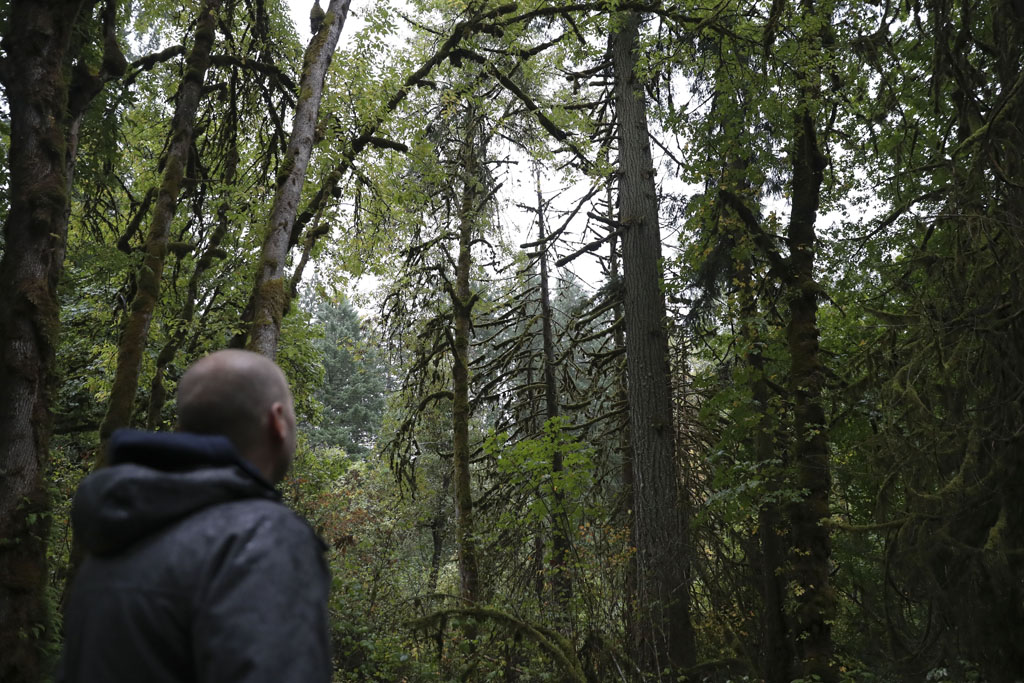
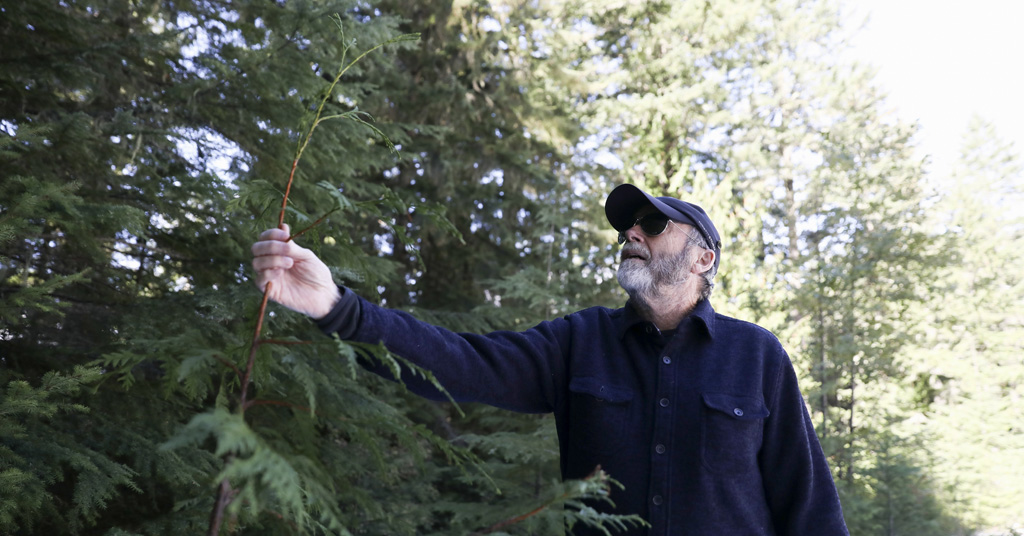
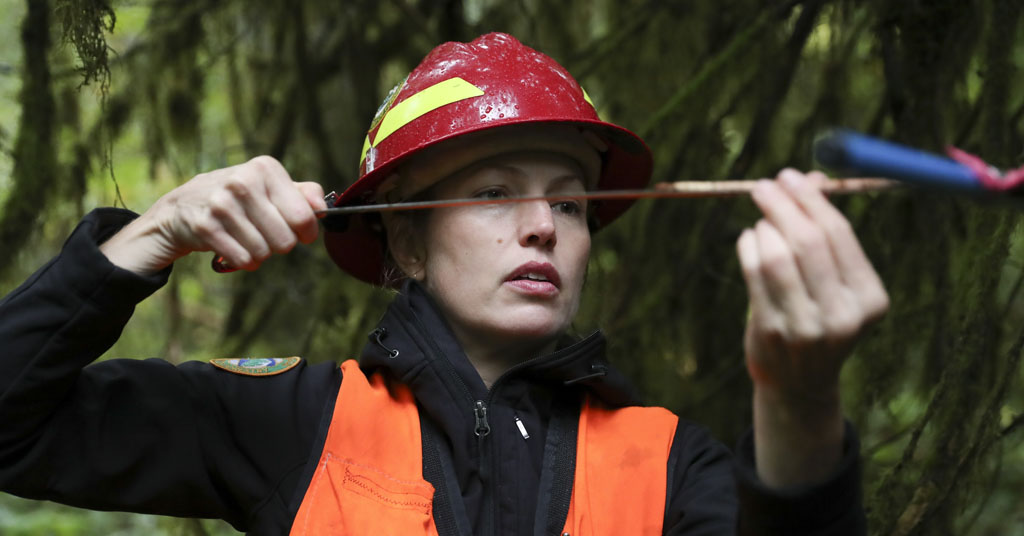



Again, I’m being educated by Columbia Insight writers about issues in the PNW that I don’t find being covered anywhere else! Thank you, and I love listening to the articles and then going back and looking at article and photos.
Excellent article, well written and informative. While WBP is in dire trouble, there is hope for saving the species.
The video is outstanding. It’s rewarding to view and listen.